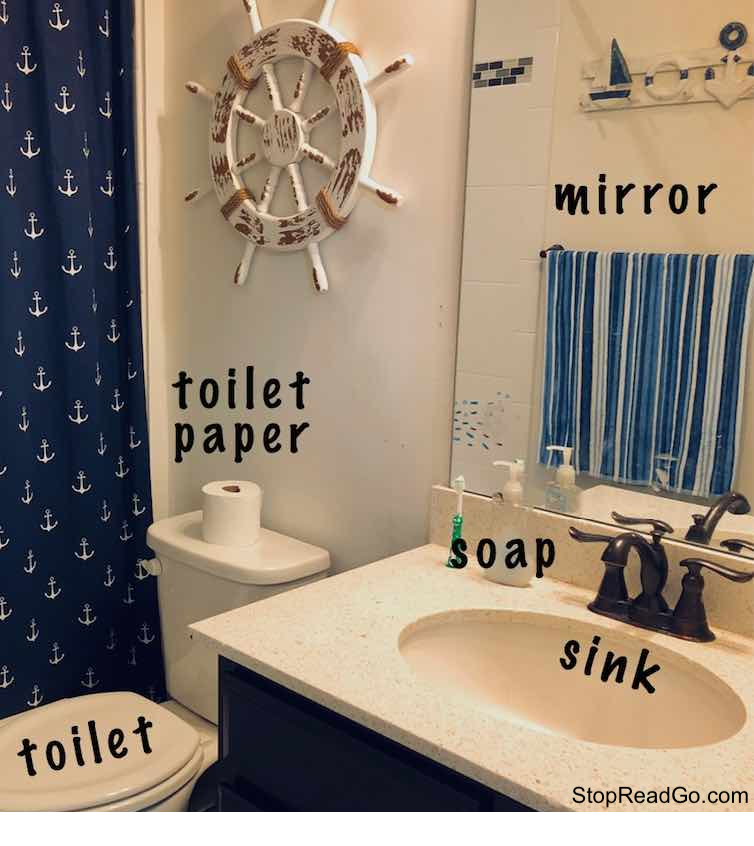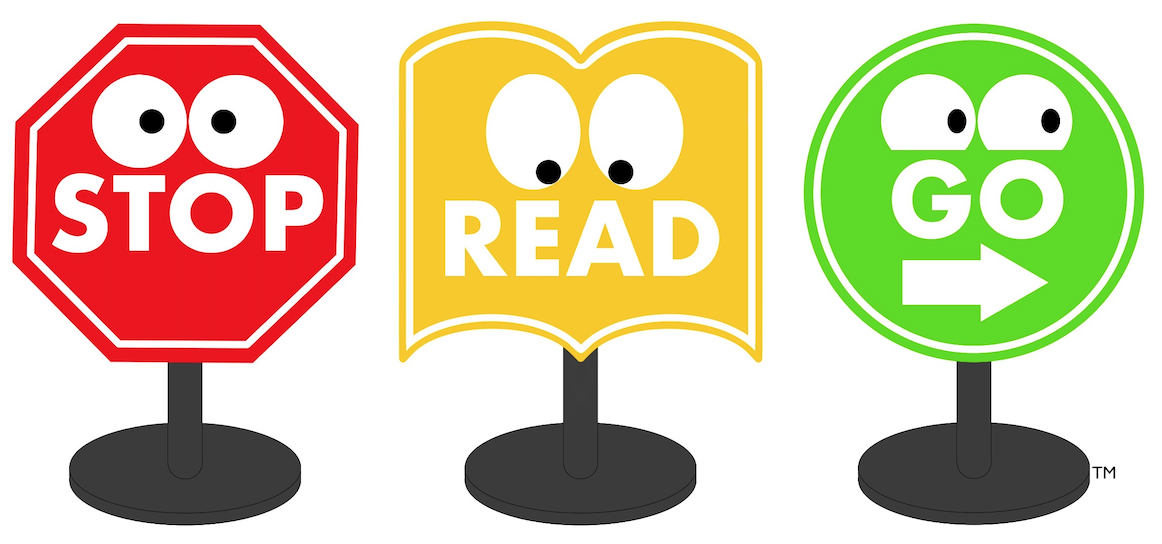You want your child to read. So, you start by singing the ABC song and then you try teaching him each letter of the alphabet and what it looks like, usually displayed in uppercase letters next to an animal or object that starts with that letter. You also read to him every day or every night or even all day.
You read to him books with lots of words and sentences in it, with exclamation points, question marks, quotation marks, a mix of uppercase or lowercase letters, with commas and periods, etc… and mostly filled with beautiful pictures of animals or cars or princesses or fictional characters or cartoons.
But when your kid sees a written word, he doesn’t know how to decipher it. Knowing the name of the letters is not sufficient. He can maybe spell out a word like A-P-P-L-E, but he doesn’t know how to put it together to form the word that results in the sound it actually makes when you say it aloud: “apple”.
And even if you are teaching him the sound of the letters (phonics), he still doesn’t understand why on earth the “e” suddenly disappears or even why are there 2 “p” letters, or when to say the long sound or the short sound of the vowel, or when to use the soft or hard sound of consonant.
Frustrating.
Your child wishes he could read, but it’s just too confusing. And so, he starts to rely more in the images on the page to tell him what the story is about and ignores the written words altogether. He starts to get frustrated and loses confidence on himself.
I don’t blame him, he is right. So, how can we help him?
Like I said in my previous post: put yourself in their shoes.
To put it in perspective:
Just imagine traveling to a different country where they speak a different language. Upon your arrival, the airline tells you that they have misplaced your luggage and they promised to call you the next day once they find it. All you have is your wallet and your phone and it’s late at night. The good news is that you have a hotel reservation, so you call a taxi to take you there. You check in with your ID and they give you the key to your room. But before you take the elevator, you make sure to buy at least a toothbrush and toothpaste from the front desk. When you get to your room, you decide to take a shower to relax after such a long trip. While showering, you start reading the labels on the shampoo and the soap, but they are all in a language you don’t know. You also noticed the toothpaste and the toothbrush while brushing your teeth.
They are written as follows:
- шампунь
- мыло
- зубная паста
- зубная щетка

But then you remember how the front desk lady pronounced these words.
She said:
- shampun’
- meelo
- zubnaya pasta
- zubnaya shetka
Then, you start to break down each word into the sounds it makes:
ш-а-м-п-у-нь = sh-a-m-p-u-n’
м-ы-л-о = m-ee-l-o
з-у-б-н-а-я = z-u-b-n-a-ya
п-а-с-т-а = p-a-s-t-a
з-у-б-н-а-я = z-u-b-n-a-ya
щ-е-т-к-а = sh-e-t-k-a
And you realize, zubnaya must mean teeth! You feel so proud of yourself. The next day, you stop by a pharmacy and see these products on the shelves and get excited because you actually know what “шампунь” means and how it is pronounced. The more times you see and hear these words in your daily life, the more it sticks in your head. And you can even start to read new words, based on the sounds you already learned.
I hope you got the point I’m trying to make with this story. Children are the same way, every word to them seems like random symbols put together. Unless you make an effort to point out each word, tell him what it says or how it is pronounced and explain or demonstrate the meaning of the word, then the word will not read itself.
Now, imagine if every time your child went to the bathroom, there were words written on each object he sees. He would see the word “toilet” on the toilet, “mirror” on the mirror, “bathtub” on the bathtub, “soap” on the soap, “shampoo” on the shampoo, etc. And because you are always with him, you can help him by pointing out each word and saying it aloud to him. Eventually, he will start to remember and match the word with the object it represents. And whenever, he sees that word in a book or in other places, he will be so excited and proud of himself because he can actually read the word and know what it means.

You could call this “sight words.” But it’s better than learning sight words from a book or a piece of paper. This method, which I sometimes call it “the subtitles method” (like watching a movie in a different language and reading the subtitles as the actors speak), is much better because it is more interactive and is embedded into every part of their daily routines. It is not lost in a worksheet, or a flashcard, or a book that’s filled with a bunch of other words, punctuation marks and pictures that just serve as a distraction (basically noise).
Having the word “door” on a door that you see and hear every day will be recorded more easily by the brain and stored into the long-term memory. Having the word be part of the child’s sensory experience can facilitate the storage and retrieval of information later on.
The constant exposure to that word and the repeated emphasis by the parent to say or sound out the word every time he sees it, can help the brain to start making connections and inferences about the sounds of each letter. He might even start to notice the different spelling rules without even realizing it.
This will not only increase his confidence but it will motivate him to start reading on his own.
Key take-aways:
- Put the word on an object your child sees every day (You can buy these labels for each room of your house or these labeled clothes, labeled toothbrushes and labeled utensils to incorporate into your kiddo’s daily routines).
- Focus on one or two words at a time and slowly introduce new words.
- Say or sound out the word every time you see it.
- Ask your child to repeat it (but don’t be pushy! if he doesn’t say it, it doesn’t necessarily mean he is not paying attention or listening)
- Look for those words everywhere you go and every book you read together.
Another helpful tip:
- If a word starts with a letter that only has 1 sound associated with it, point it out by elongating the sound. For example, point out the letter “d” in “door” by saying its sound instead of the name of the letter, so “dddd…door”. Other examples are “ffff…fridge” and “mmmm…mirror”.
- If a letter has multiple sounds associated with it, say it the way it applies to that specific word. Don’t use the name of the letter or the most common sound. For example, don’t say “a” for apple, instead, say “aaaa…apple”. don’t say “s” for shampoo, instead, say “sh…shampoo”. Don’t say “c” for chair, instead say “ch…chair”. Say the letter “c” as it sounds in “c…cup” and say the letter “c” as it sounds in “c…ceiling”.
- If he asks you why the same letter has different sounds or if he seems confused, then you can explain in which cases the letters change. Maybe because the location of the letter matters or its neighboring letters make it do different things. For example, the “s” with the “h” makes the “sh” sound or the “c” with the “e” makes the “s” sound, while the “c” with the “u” makes the “k” sound, and so on.
I hope this helps you or at least give you some ideas on how to motivate your child to read!
